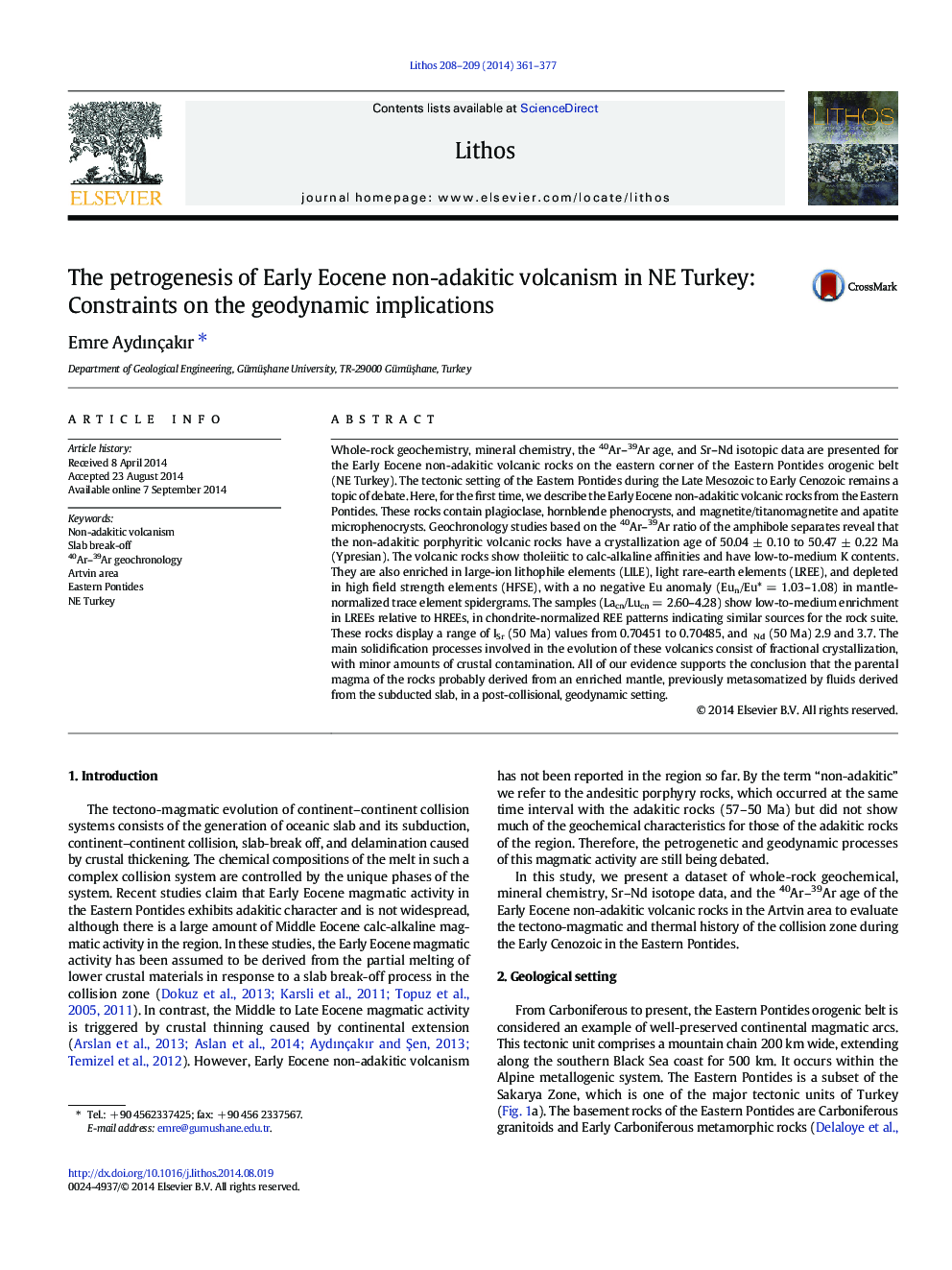| Article ID | Journal | Published Year | Pages | File Type |
|---|---|---|---|---|
| 4715921 | Lithos | 2014 | 17 Pages |
Abstract
Whole-rock geochemistry, mineral chemistry, the 40Ar-39Ar age, and Sr-Nd isotopic data are presented for the Early Eocene non-adakitic volcanic rocks on the eastern corner of the Eastern Pontides orogenic belt (NE Turkey). The tectonic setting of the Eastern Pontides during the Late Mesozoic to Early Cenozoic remains a topic of debate. Here, for the first time, we describe the Early Eocene non-adakitic volcanic rocks from the Eastern Pontides. These rocks contain plagioclase, hornblende phenocrysts, and magnetite/titanomagnetite and apatite microphenocrysts. Geochronology studies based on the 40Ar-39Ar ratio of the amphibole separates reveal that the non-adakitic porphyritic volcanic rocks have a crystallization age of 50.04 ± 0.10 to 50.47 ± 0.22 Ma (Ypresian). The volcanic rocks show tholeiitic to calc-alkaline affinities and have low-to-medium K contents. They are also enriched in large-ion lithophile elements (LILE), light rare-earth elements (LREE), and depleted in high field strength elements (HFSE), with a no negative Eu anomaly (Eun/Eu* = 1.03-1.08) in mantle-normalized trace element spidergrams. The samples (Lacn/Lucn = 2.60-4.28) show low-to-medium enrichment in LREEs relative to HREEs, in chondrite-normalized REE patterns indicating similar sources for the rock suite. These rocks display a range of ISr (50 Ma) values from 0.70451 to 0.70485, and ÆNd (50 Ma) 2.9 and 3.7. The main solidification processes involved in the evolution of these volcanics consist of fractional crystallization, with minor amounts of crustal contamination. All of our evidence supports the conclusion that the parental magma of the rocks probably derived from an enriched mantle, previously metasomatized by fluids derived from the subducted slab, in a post-collisional, geodynamic setting.
Related Topics
Physical Sciences and Engineering
Earth and Planetary Sciences
Geochemistry and Petrology
Authors
Emre Aydınçakır,
